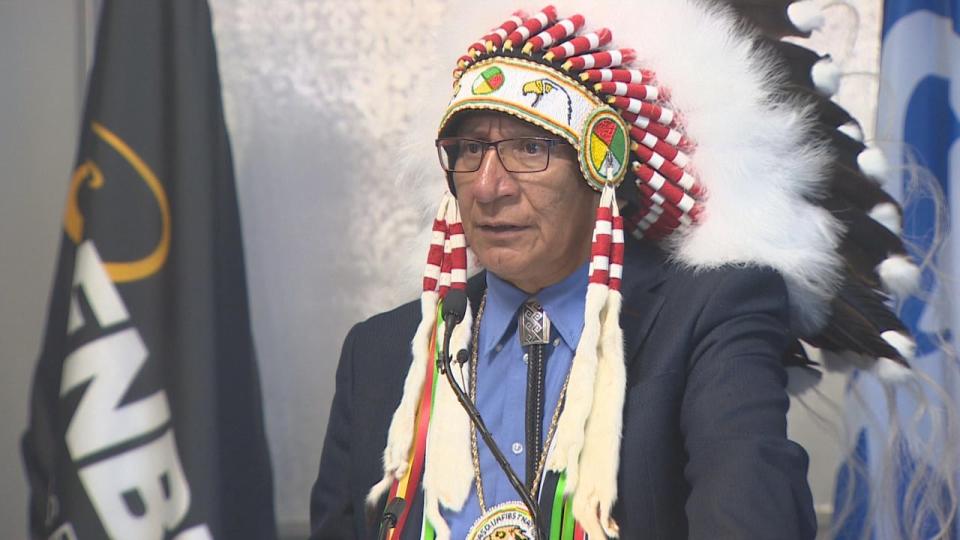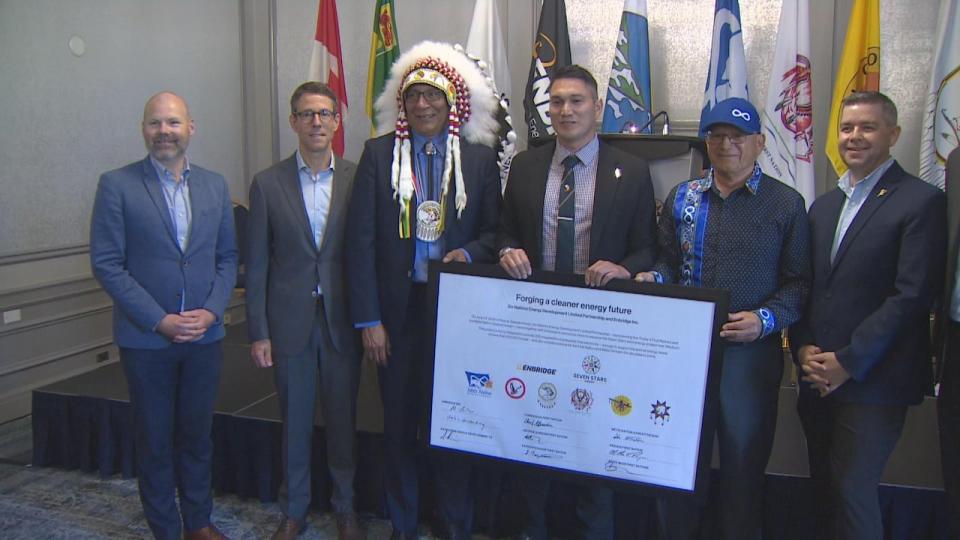Province provides Indigenous consortium with $100M in loan guarantees for wind farm project
A consortium of Five Saskatchewan First Nations, Metis Nation-Saskatchewan along with a North American energy infrastructure company are advancing plans to build a 200-megawatt wind farm with the help from of $100 million in loan guarantees from a provincial government corporation.
The Saskatchewan Indigenous Investment Finance Corp. (SIIFC) announced Monday it is providing up to $100 million in loan guarantees to the six Indigenous partners to support their investment in Enbridge Inc.'s new wind farm near Weyburn in southeast Saskatchewan.
This will help Six Nations Energy Development LP — a newly formed consortium comprising Cowessess, George Gordon, Kahkewistahaw, Pasqua and White Bear First Nations as well as Métis Nation-Saskatchewan — get at least a 30 per cent ownership stake in the Seven Stars Energy Project.
Chief Matthew Peigan of Pasqua First Nation says the project will provide a stable source of revenue that will benefit the First Nations and Metis Nation-Saskatchewan for years to come.
"When a First Nations economic division generates wealth for their First Nation, that does not go to an individual as in person, as in shares as it does in the corporate world," Peigan said.
It goes "back to the First Nation to enhance programs and services: housing, education, health, youth, elders programs where we need to add more resources to those programs," he said.

Saskatchewan's Trade and Development Minister Jeremy Harrison said the "historic" investment will benefit almost 25 per cent of the province's Indigenous population.
This is the first time SIIFC has provided loan guarantees, which Harrison said are necessary to ensure the consortium received equity in the project.
The loan guarantees aim to solve a problem created by the Indian Act, which prohibits Indigenous people from using the value of their land, or property built on it, as collateral, a situation that has made it extremely hard to secure financing for large scale projects.
"What this was really intended to do is address an area of genuine market failure," Harrison said.
Harrison says the wind farm project will increase Indigenous participation in Saskatchewan's economy, create new jobs and advance economic reconciliation in our province.
Net-zero energy source
Dustin Duncan, the minister responsible for SaskPower, says the project is expected to generate enough emissions–free power to support the annual energy needs of more than 100,000 Saskatchewan homes.
He adds the project will help ensure SaskPower reaches its goals of achieving net-zero greenhouse gas emissions by 2050 and deploying up to 3,000 MW of wind and solar generation by 2035.
"Partnerships like this between Enbridge and Six Nations Energy Development will be critical for SaskPower to achieve its emission reduction targets, while also providing extraordinary benefits to Saskatchewan's First Nations communities," Duncan said.

Enbridge is working toward securing a long-term power purchase agreement with SaskPower to support final investment decisions that are expected to be made in 2025.
If approved, construction on the wind farm is expected to start shortly after, with turbines spinning as early as 2027, according to Matthew Ackman, Enbridge's president of renewable power.
He said he expected the final cost of the project will likely bet a few hundred million dollars.
"All of the partners are looking for a cash return on this project or it doesn't work," Ackman said. "It's going to generate a lot of power — there's a lot of value in that electricity. It will generate substantial cash flow."


